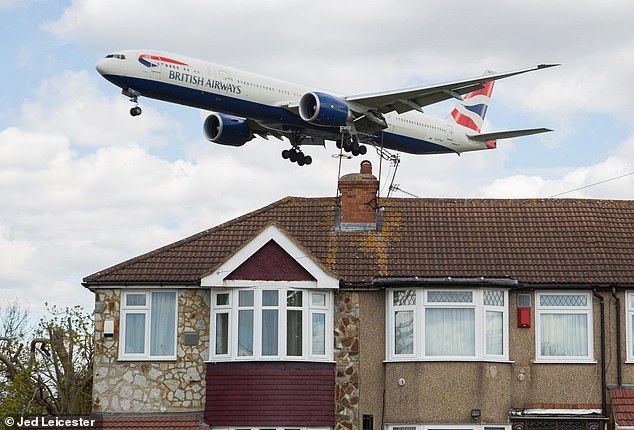
Louder Skies: Climate Change Amplifies Aircraft Noise for Airport Neighbors
Living near an airport already presents a unique set of challenges, primarily the constant drone of aircraft. However, new research suggests that this auditory nuisance is poised to worsen, with climate change playing a significant role in amplifying aircraft noise. Residents near airports, particularly those in Europe, may soon experience a substantial increase in the volume and intensity of sounds emanating from departing planes.
A recent study has revealed a direct link between rising global temperatures and increased noise pollution from aircraft. The core issue lies in the effect of warmer air on an aircraft's ability to generate lift during takeoff. As air temperature increases, air density decreases, meaning there are fewer air molecules within a given volume. This reduction in air density diminishes the lift force acting on the aircraft, forcing it to remain closer to the ground for a longer period after takeoff.
The impact is straightforward: the closer the aircraft is to the ground, the louder it sounds to those living nearby. This translates to a more pervasive and intrusive noise environment for communities surrounding airports.
The Science Behind the Sound
The study specifically examined the climb angles of Airbus A320 aircraft, a common model used for short-haul flights within Europe. Utilizing climate projections, researchers modeled how these climb angles would be affected in a warmer climate. The findings indicated an average decrease in climb angles of one to three percent. While this might seem marginal, on particularly hot days, the decrease could be as high as 7.5 percent.
This seemingly small reduction in climb angle can have a significant impact on noise levels experienced on the ground. The research suggests that the number of people affected by aircraft noise pollution could increase by as much as four percent by the year 2050.
Beyond the Decibels: The Annoyance Factor
Beyond the simple increase in decibel levels, the study also highlighted a concerning shift in the frequency of the noise. The research indicates that the increase in noise pollution will be most pronounced in the lower frequency ranges. Low-frequency noise is particularly problematic because it travels further and is more difficult to block. It's also considered more psychologically "annoying" to the human ear, capable of causing stress and sleep disturbances.
European Airports Under Scrutiny
The research focused on 30 European airports, including major hubs such as:
- London City Airport
- Heathrow Airport
- Gatwick Airport
- Dublin Airport
- Brussels Airport
- Amsterdam Airport Schiphol
- Lisbon Portela Airport
- Zurich Airport
These airports, serving millions of passengers annually, are likely to see the most pronounced effects of climate change on aircraft noise.
Implications and Potential Solutions
The findings present a serious challenge for airport authorities, airlines, and policymakers. As climate change continues to drive up global temperatures, managing aircraft noise will become increasingly difficult.
The study authors emphasize the importance of reducing greenhouse gas emissions, the primary driver of climate change. By curbing emissions from sources like the burning of fossil fuels, the rate of temperature increase can be slowed, mitigating the impact on aircraft noise.
However, even with aggressive emissions reductions, some level of adaptation will be necessary. This could include:
- Technological Advancements: Investing in quieter engine technologies that reduce noise at the source.
- Operational Adjustments: Modifying flight procedures to optimize climb angles and minimize noise exposure.
- Land Use Planning: Implementing stricter land use regulations around airports to limit residential development in high-noise areas.
- Community Engagement: Engaging with local communities to understand their concerns and develop mitigation strategies.
Turbulence on the Rise: A Double Whammy for Aviation
The increased aircraft noise is not the only climate-related challenge facing the aviation industry. Other research has indicated that climate change is also contributing to increased turbulence during flights. A warming atmosphere disrupts the jet stream, leading to more frequent and severe turbulence. This poses a safety risk to passengers and crew, potentially leading to injuries.
Airport Flooding: Another Climate Change Threat
Furthermore, rising sea levels associated with climate change threaten the infrastructure of many airports. A 2020 study revealed that a global mean temperature rise of 2°C could submerge 100 airports below mean sea level. This could disrupt air travel and have significant economic consequences.
The aviation industry faces a complex set of challenges in the face of climate change. Addressing these challenges will require a multifaceted approach that includes emissions reductions, technological innovation, and proactive adaptation measures. The future of air travel depends on it.

No comments:
Post a Comment